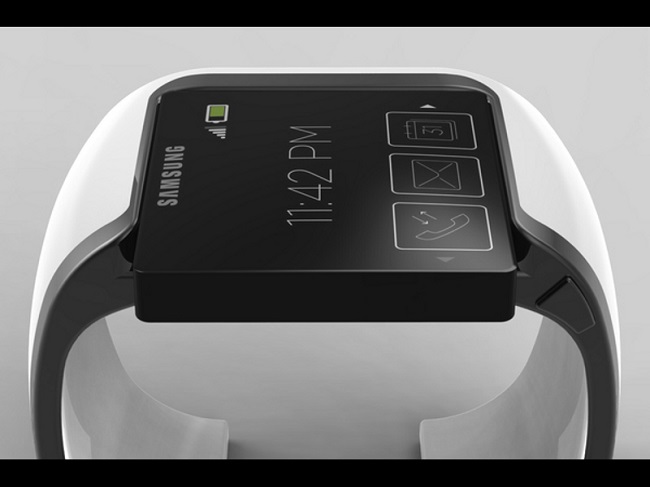Amazon smartphone image via BGR
A look at this week’s gadget happenings, as Amazon announces its first smartphone, Toshiba is to launch its first 4K laptop, and Samsung puts a 60pc mark-up on the Galaxy S5 smartphone.
Amazon smartphone
The first details of Amazon’s first entry into the smartphone market was revealed this week and while on first appearance wouldn’t look any different to a standard smartphone, the Amazon smartphone is expected to feature a custom 3D interface that will put it far beyond its competitors in that capacity.
BGR were able to get a breakdown of some of the spec of the smartphone and are claiming that it will be powered by a Qualcomm Snapdragon 801 processor with 2GB of RAM, in a plastic housing and a pretty powerful 13MP camera.
In terms of the operating system, Amazon is obviously more-inclined to have its own unique system but it is expected to feature a heavily-modified version of Android similar to the one that it uses in its popular tablet, the Kindle Fire.
Its crown jewel will obviously be its 3D-capable 4.7in screen that will do away with the need for any cumbersome pair of 3D glasses.
However, while the technology is certainly being talked-up, previous attempts to create 3D screens without the need for glasses, a technology that was first introduced into the market by Nintendo with its 3DS handheld gaming device.
Its expected to be launched to the general public in September this year but has been pencilled in to make its public announcement sometime in June.
Toshiba 4K laptop
Two weeks ago, we featured one of the first 4K monitors to enter the market and now we have Toshiba’s first 4K laptop going on sale in the coming weeks, albeit at the princely sum of US$1,500 (€1,000).
Known as the Satellite P50T here and the P55T in the US, the laptop will feature a screen with a resolution that will likely mean you will be cleaning the drool from your keyboard on a regular basis. According to Engadget, the laptop will feature a 15.6inch screen with an incredible 3,840 x 2,160 resolution.
Obviously with a screen this powerful the processing power is going to be a bit above your average laptop, so Toshiba have included the latest Intel quad-core i7 CPU processor and 16GB DDR3L of RAM.
It will also feature a 2GB DDR5 Radeon R9 M265X graphics card which should be able to make almost everything look incredibly pretty on the screen.

Samsung Galaxy S5 costs US$256 to build
While hardly a surprise that a company selling a highly sought after product put a significant mark-up on that item, a team from IHS have taken apart Samsung’s latest S5 phone and found that with all its different components, costs about US$256 to make each one, and considering it sells each one in the US without a contract for US$660, this puts their profit per item in the 60pc range.
The cost is seen as a sign of the increasing costs of Samsung’s components where before it would have cost US$200 to make each phone.
The most expensive piece of equipment on the phone is its 5in screen coming in at US$63 followed by its own processors and memory drives costing US$33.
Interestingly, the fingerprint scanner that comes with the phone that was earlier this week shown to be susceptible to hacking, only costs US$4, in comparison with Apple’s iPhone 5S’s scanner which costs US$15.
The 5S was previously found to be considerably cheaper than the Galaxy S5 coming in at just under US$200 per unit.

Meanwhile…
This will all change when Apple’s latest model, the iPhone 6 is introduced later this year as initial reports suggest people will be forking out the equivalent of an extra US$100 than its predecessor.
According to investors.com, quoting sources from investment bank Jeffries, who claim the company have begun negotiations with the largest network carriers about implanting the price hike.
Despite most networks finding issues with a price increase for their customers, it’s understood that a number of them concede the point that they see no other ‘game-changing’ devices by the end of this year.
One of Jeffries’ analysts, Peter Misek, said about the possibility: “The possibility may at first seem farfetched in light of investor concerns regarding possible carrier subsidy and handset price cuts due to smartphone saturation and lack of differentiation. But we think this general lack of differentiation could be the reason why Apple may be able to get a price increase.”
Body heat-powered wearable tech
It seems we’re all likely to be ‘hot stuff’ when it comes to charging our wearable tech in the future as scientists expect that all our wearable devices will be powered this way in the coming years.
Doing away with charging that smartwatch overnight through a micro USB, a team from the Korea Advanced Institute of Science and Technology believe they have found a way to use a flexible thermoelectric generator to make the energy required to run the device.
The team’s lead, Byung Jin Cho, explained how the technology works to phys.org: “For our case, the glass fabric itself serves as the upper and lower substrates of a TE generator, keeping the inorganic TE materials in between. This is quite a revolutionary approach to design a generator. In so doing, we were able to significantly reduce the weight of our generator, which is an essential element for wearable electronics.”
So unfortunately for any zombies or vampires out there, this is unlikely to be of much benefit to you, but for everyone else this could prove-ground breaking.

Wearable tech like the Samsung smartwatch could be entirely powered by body heat in the coming years.